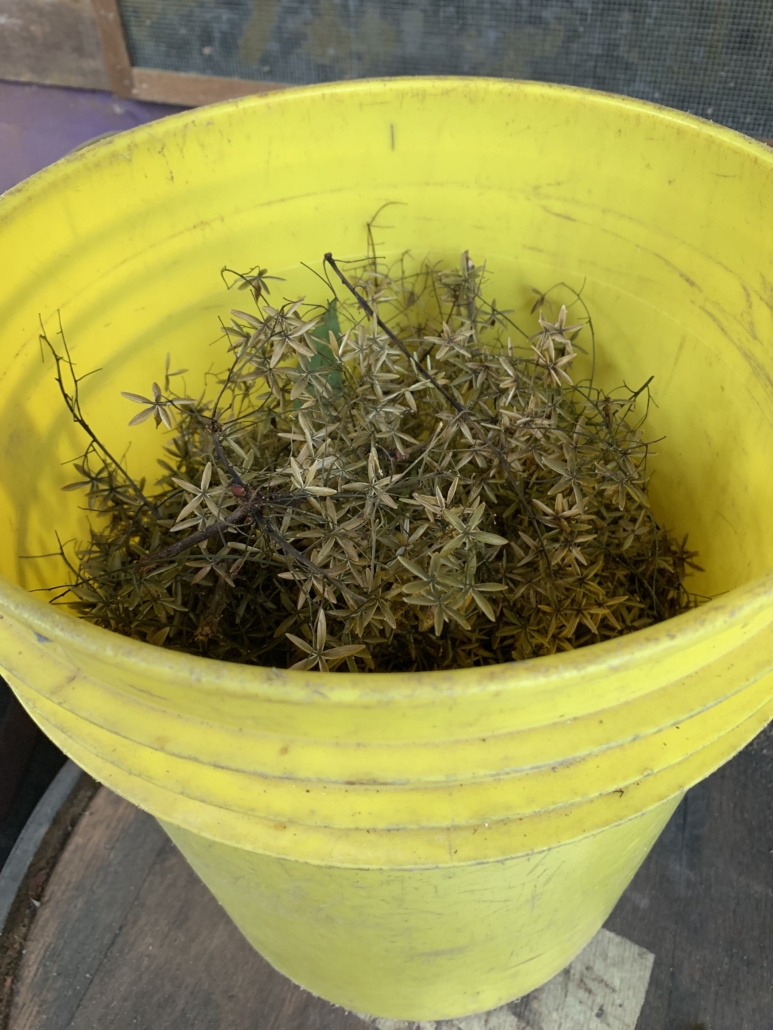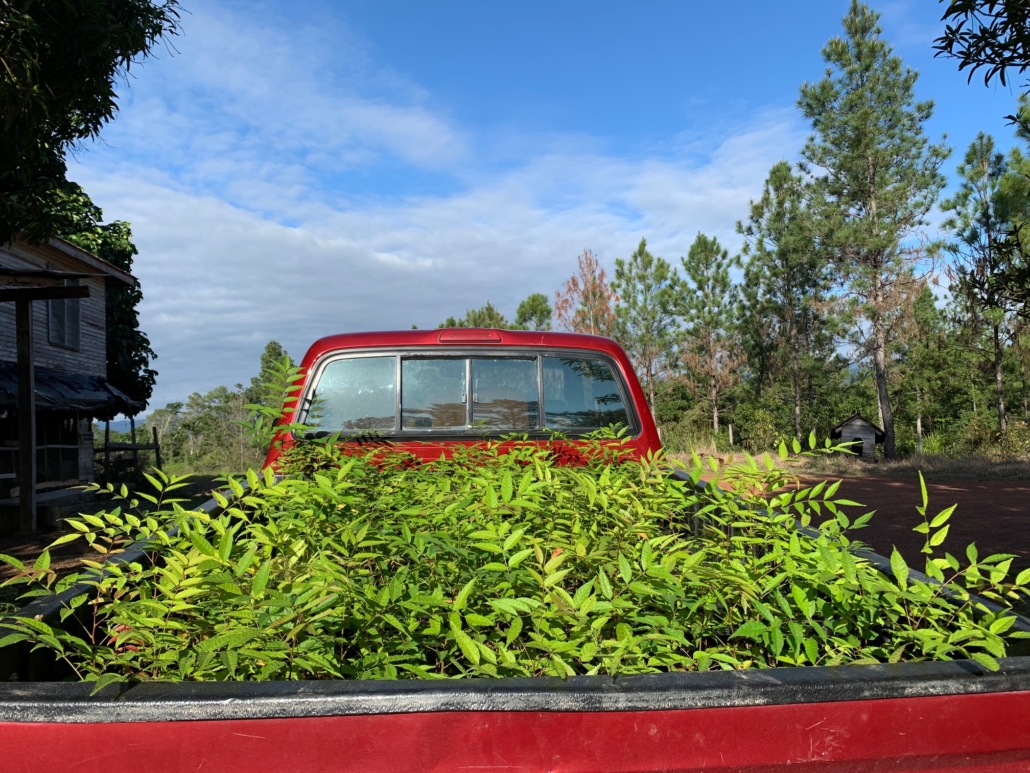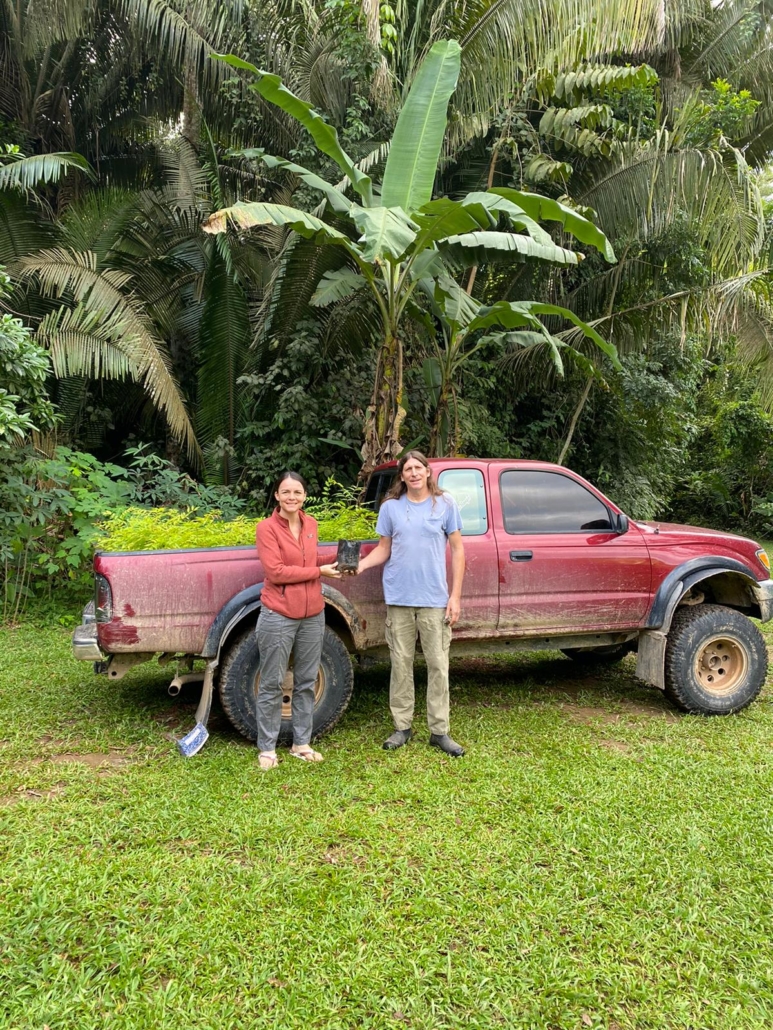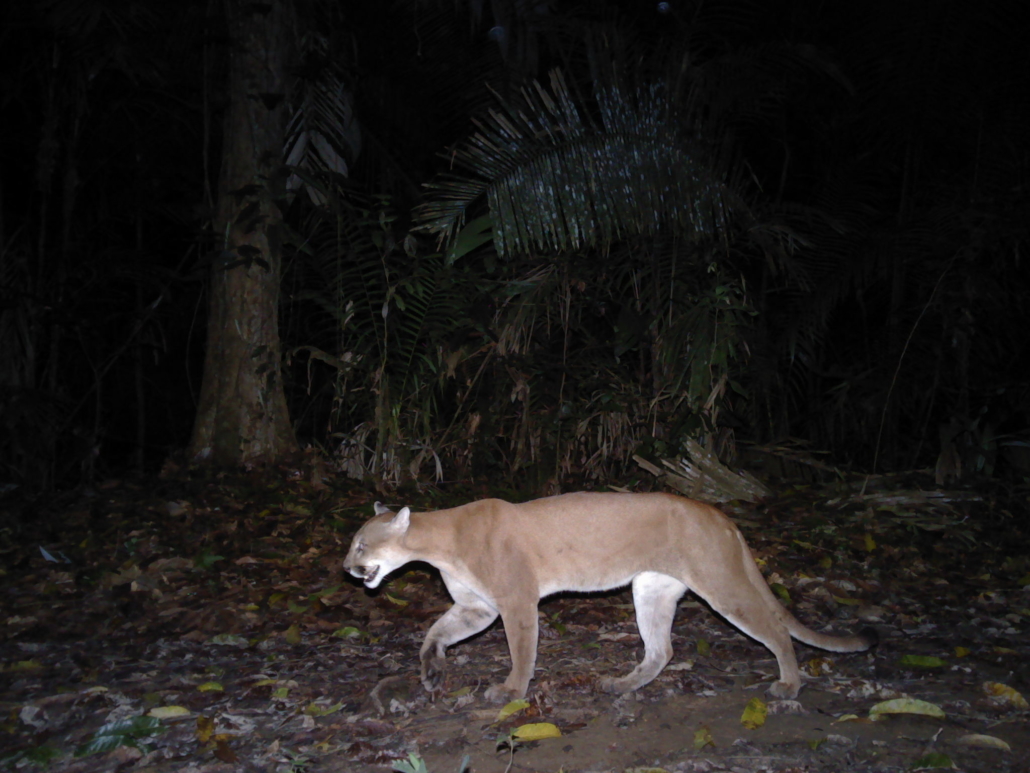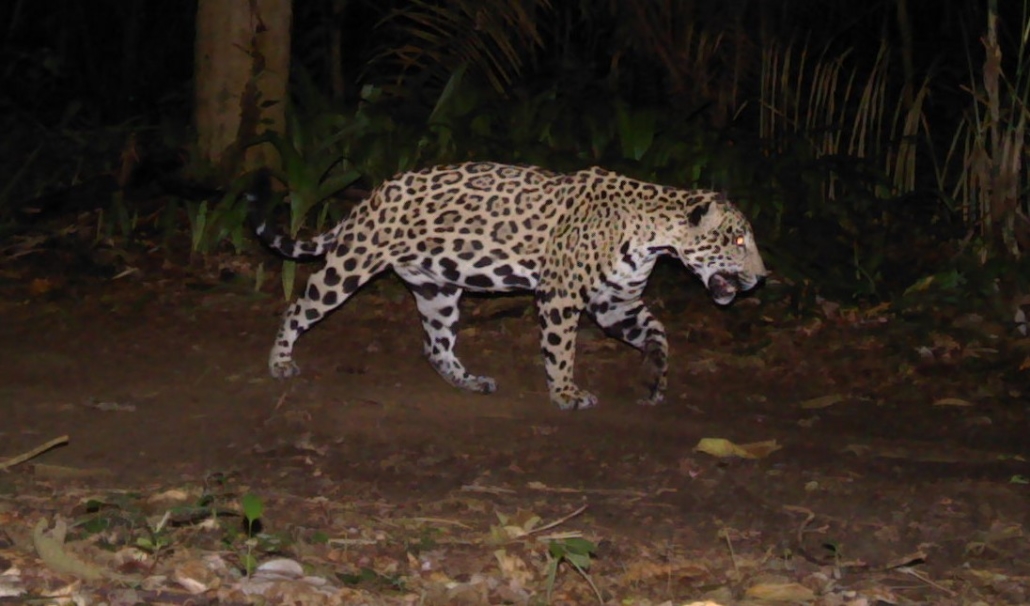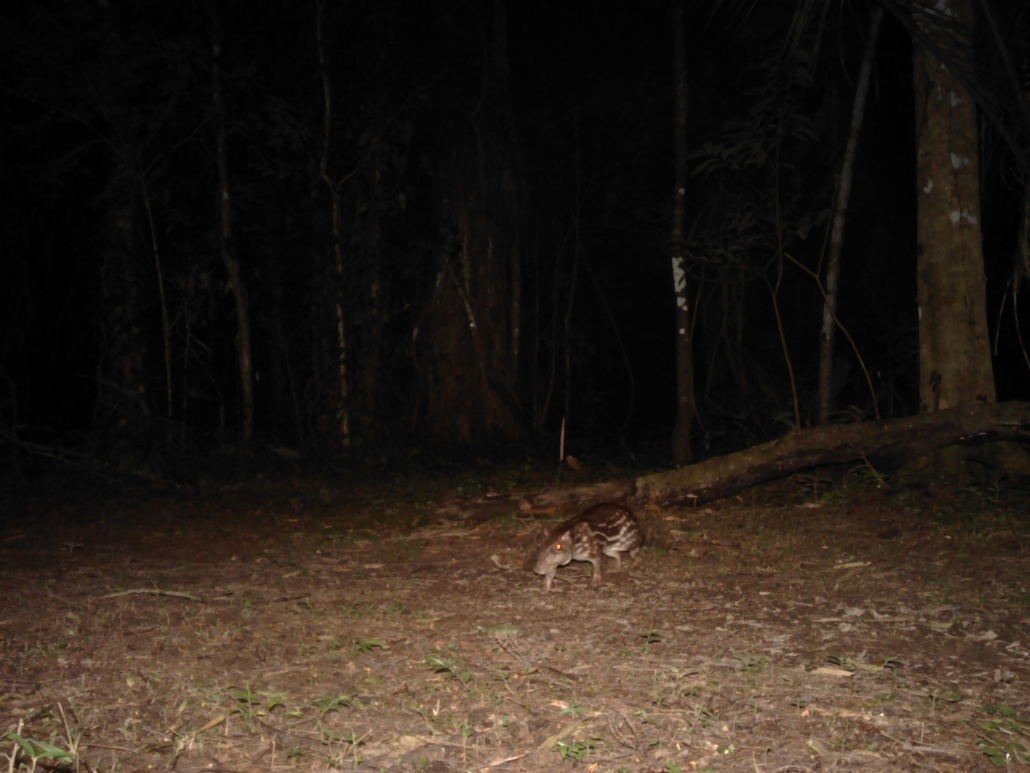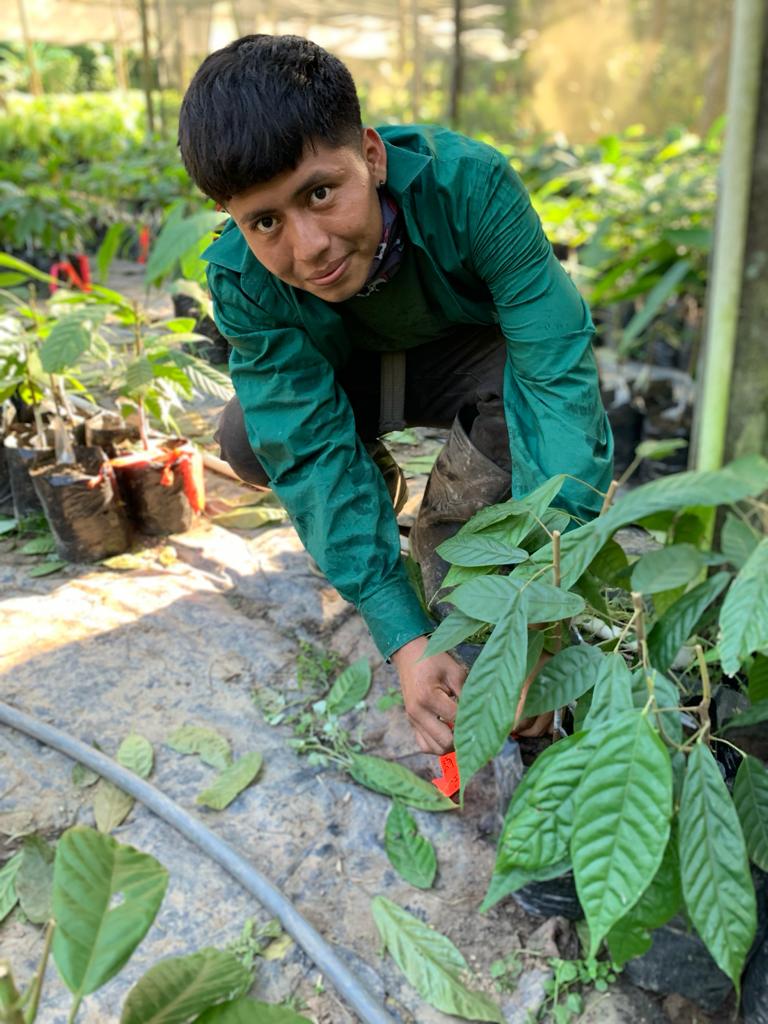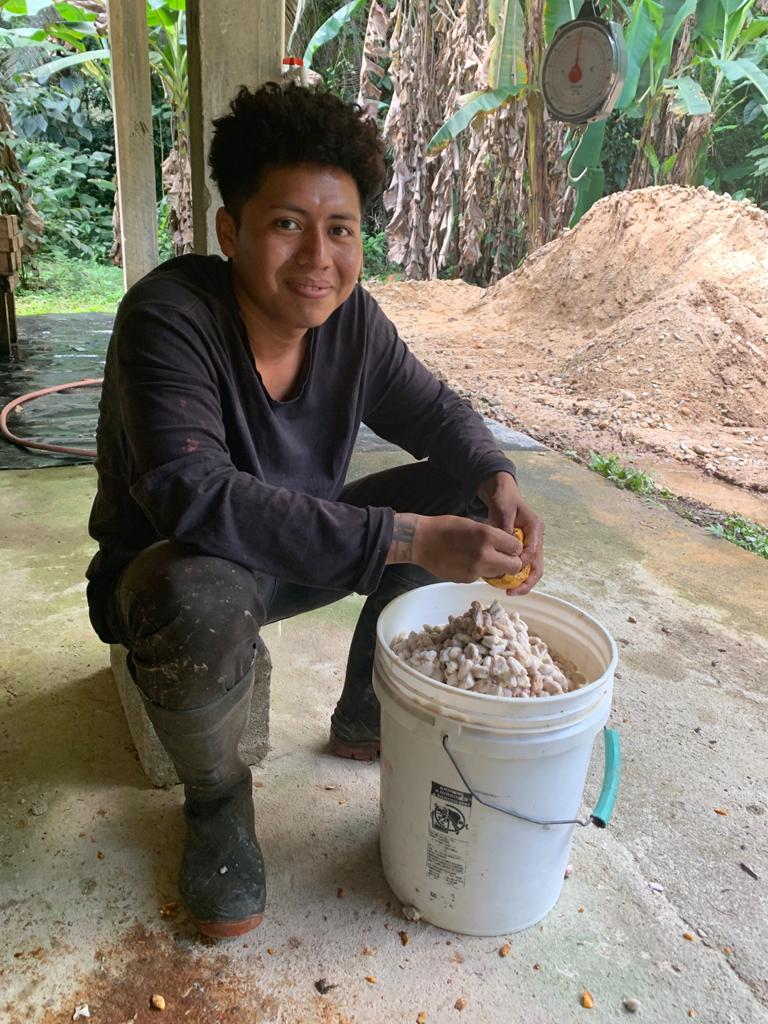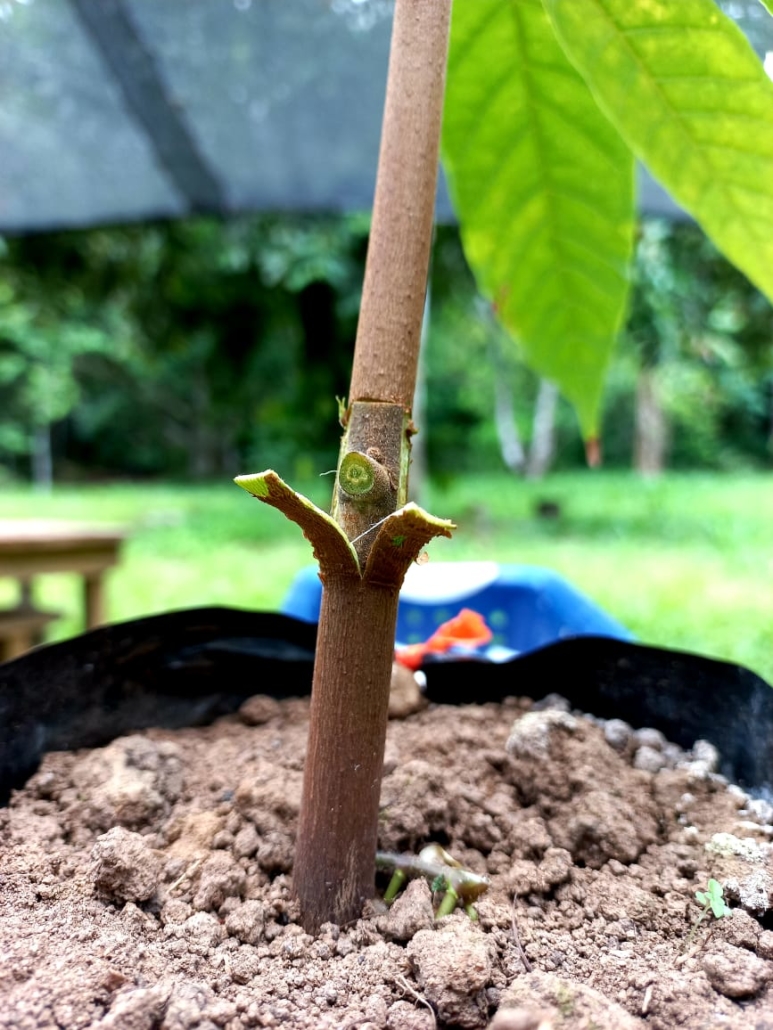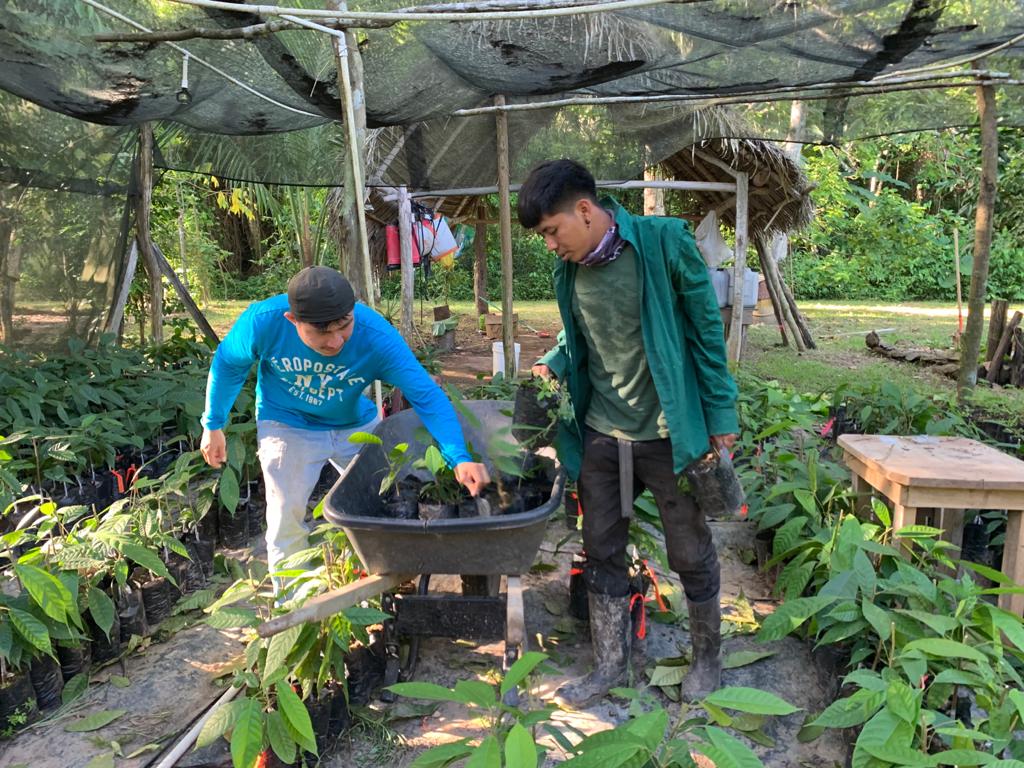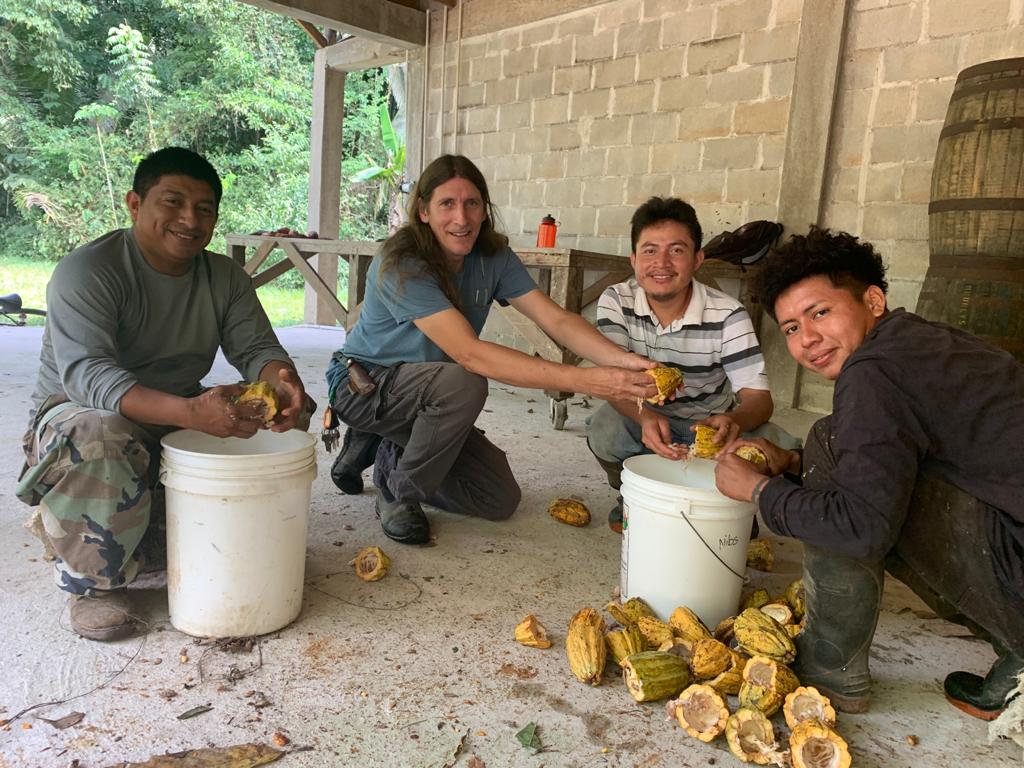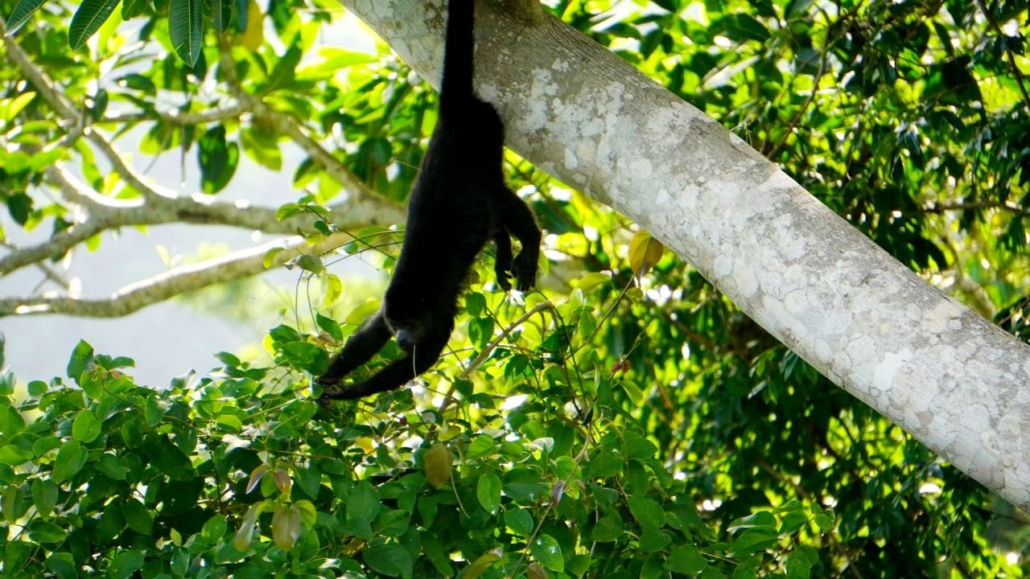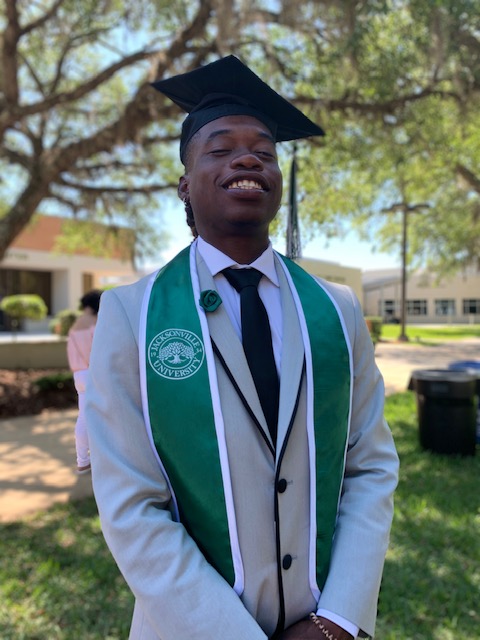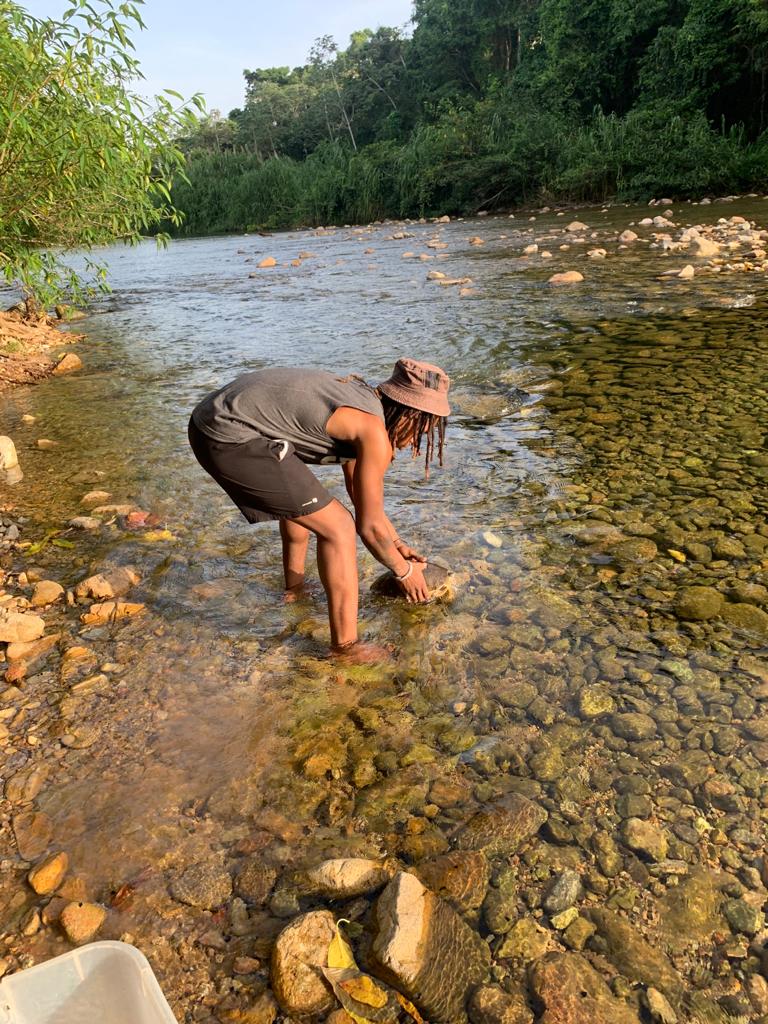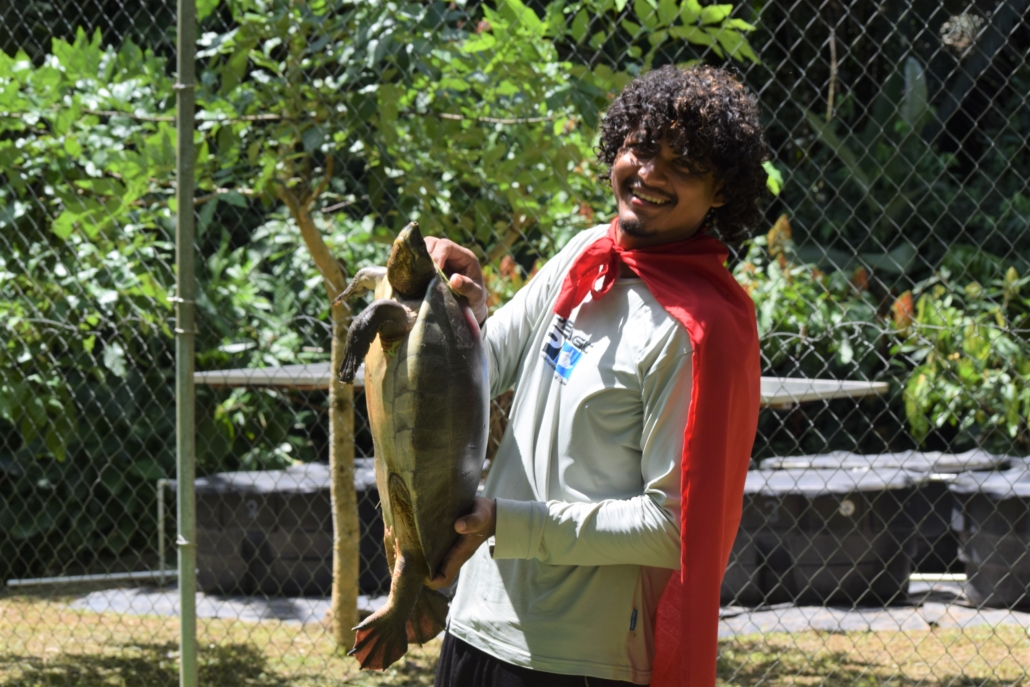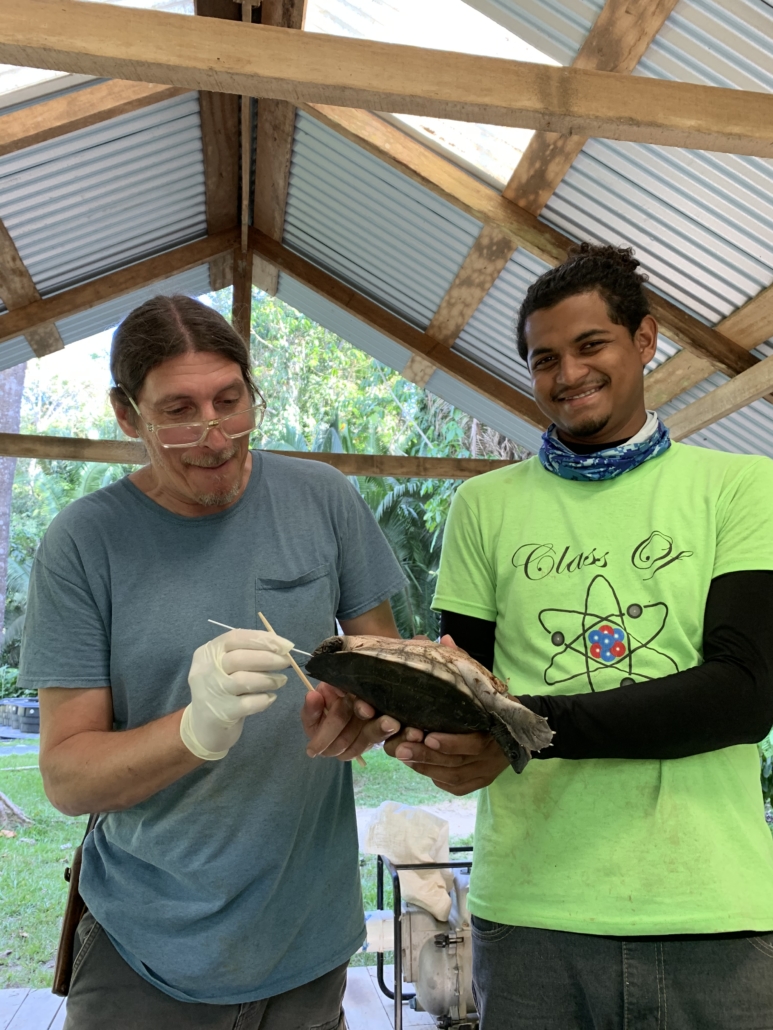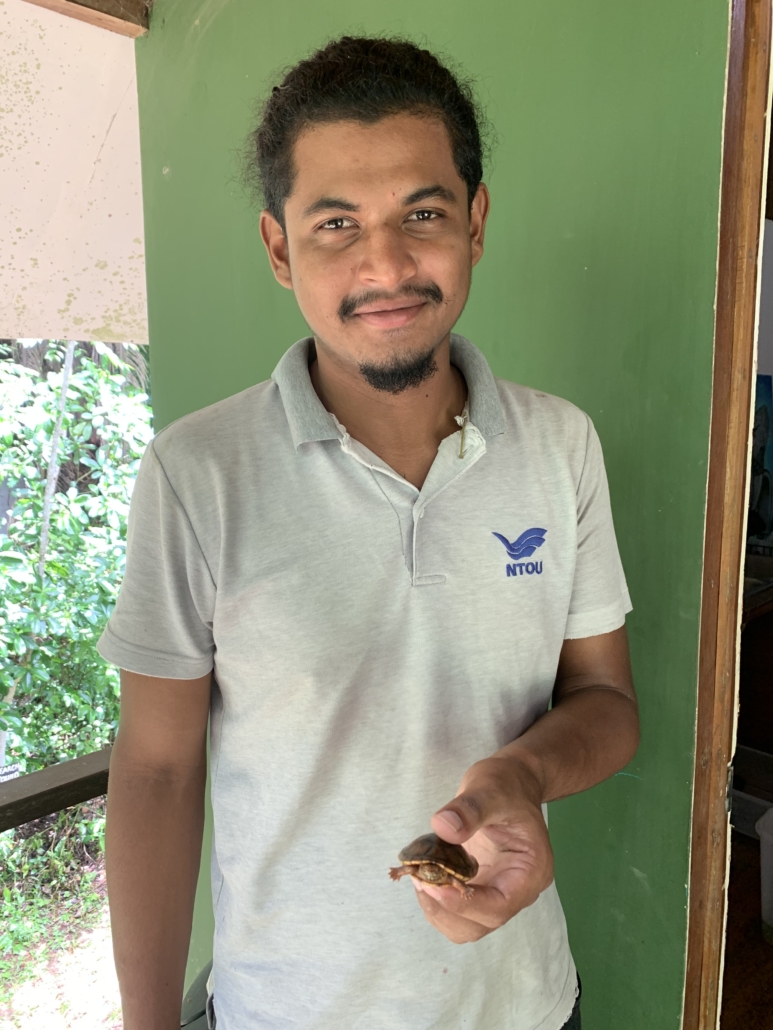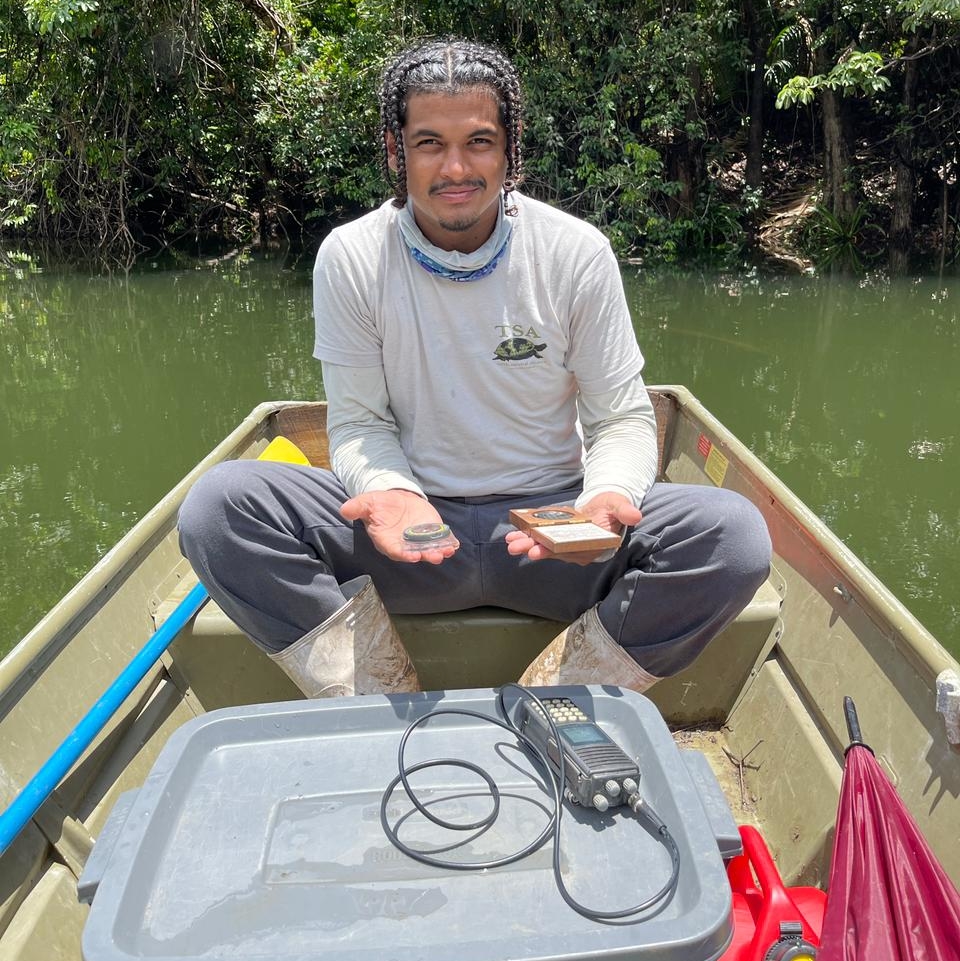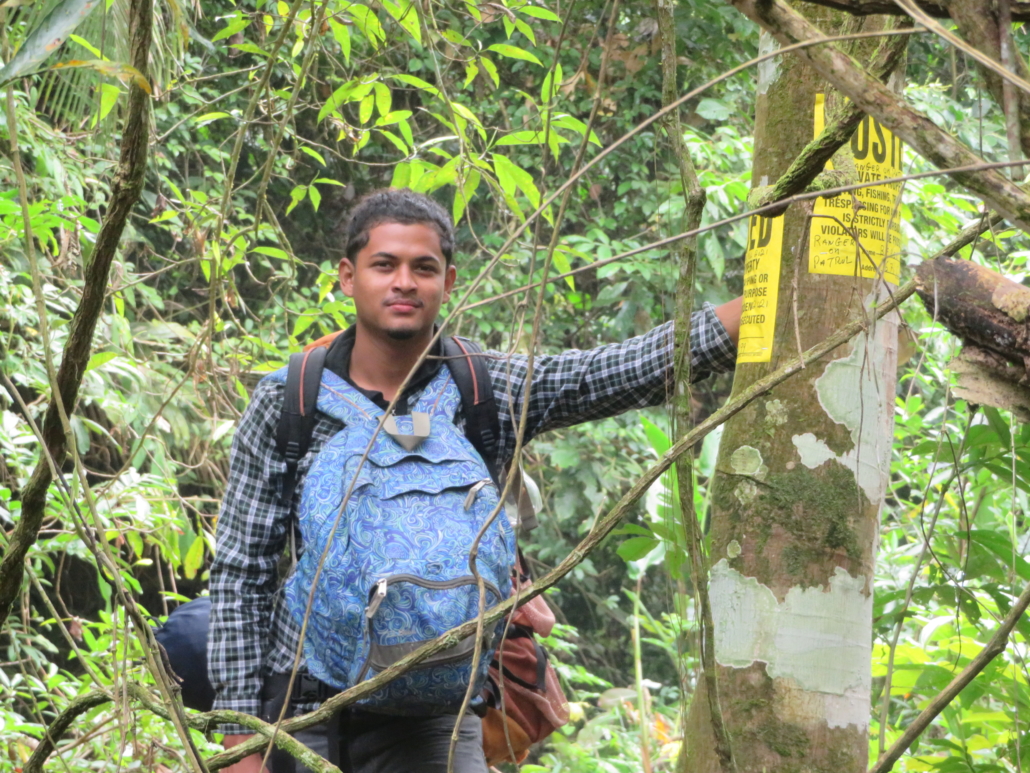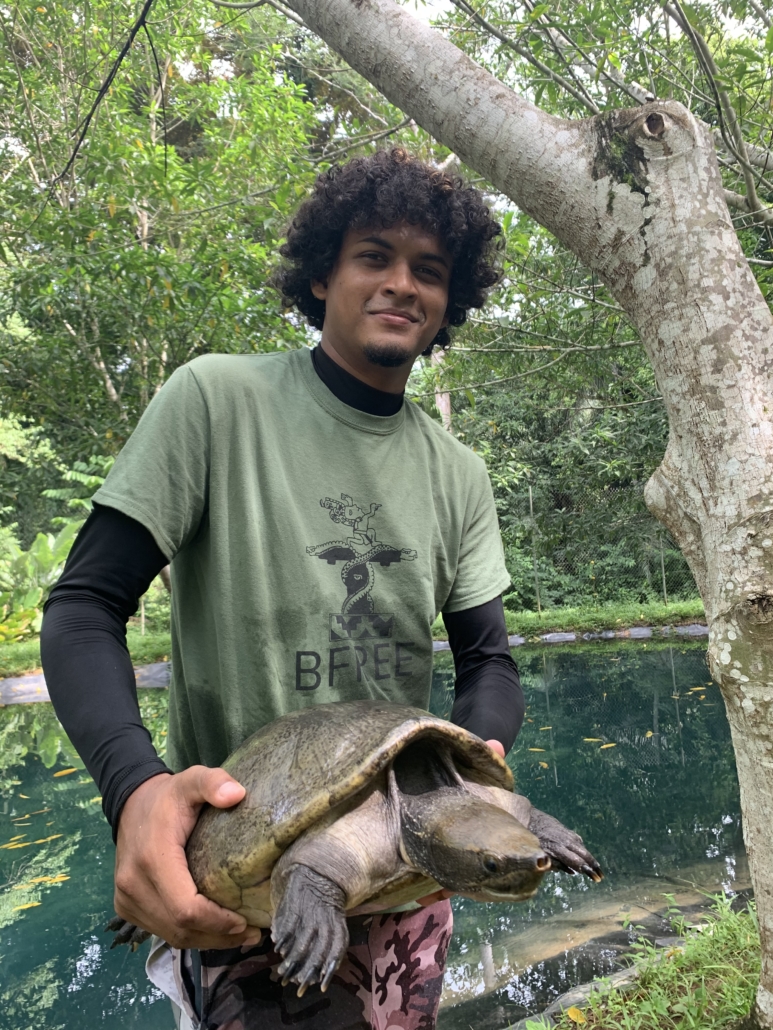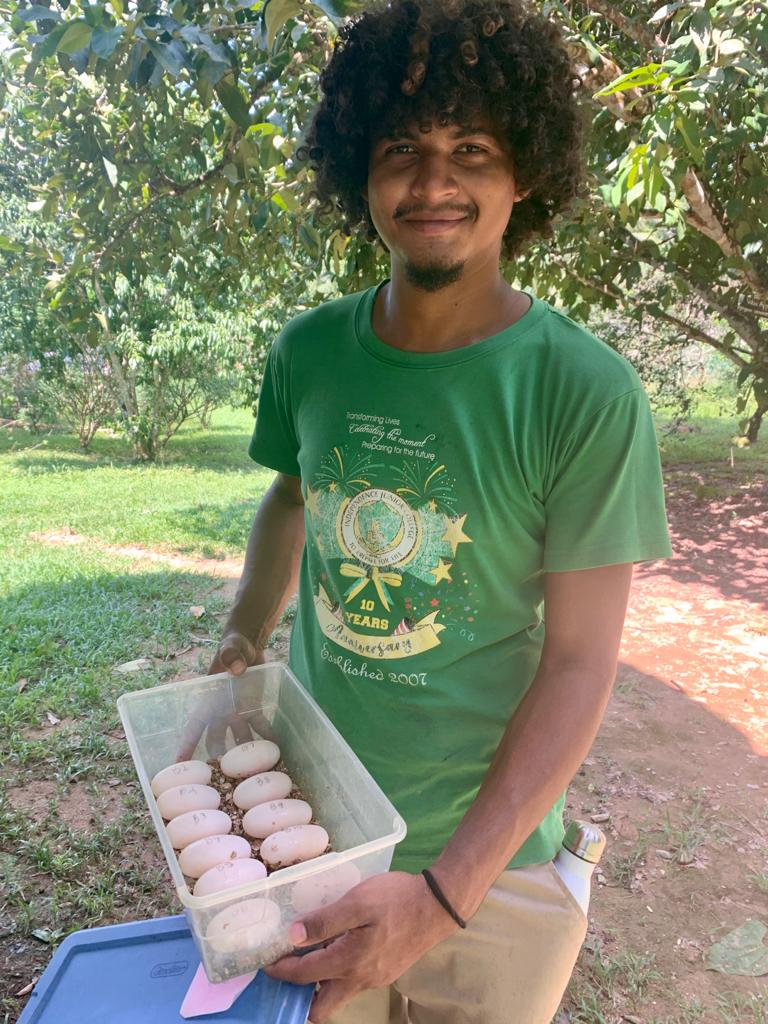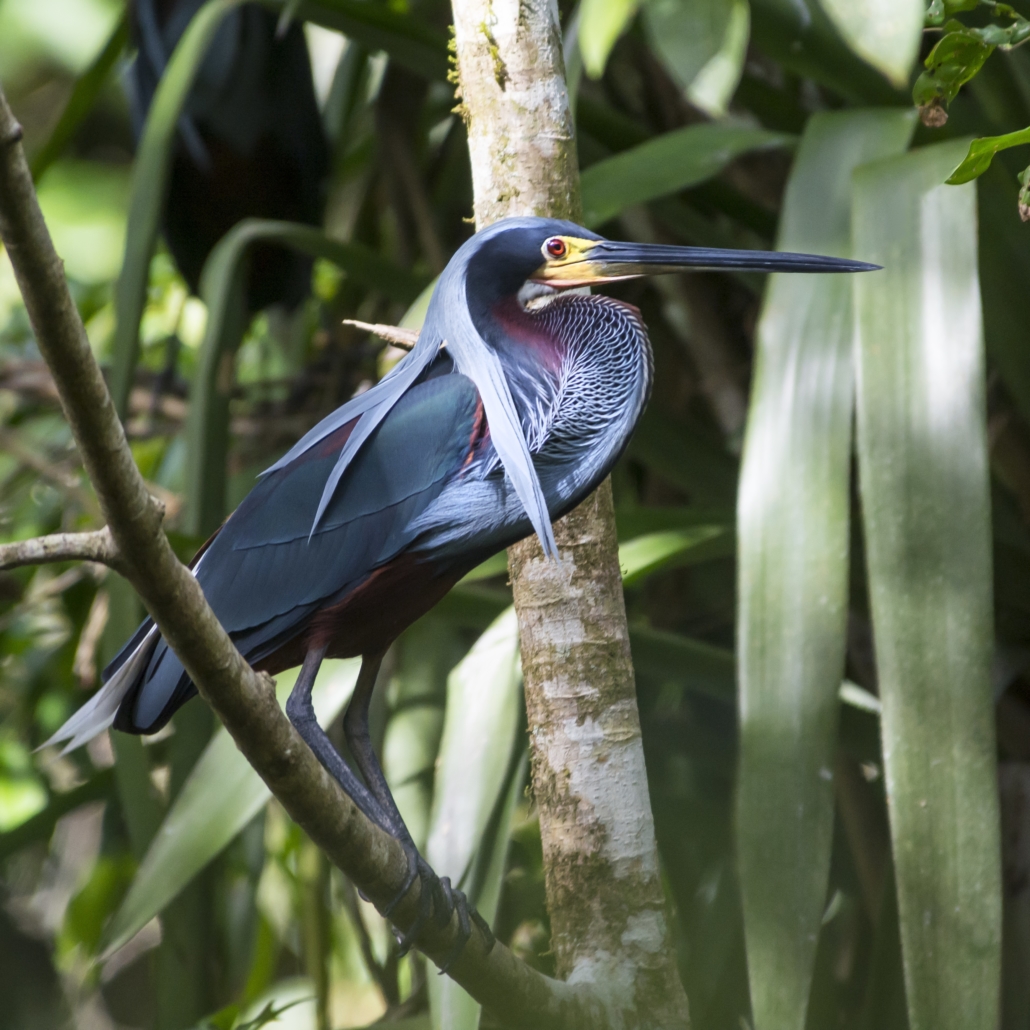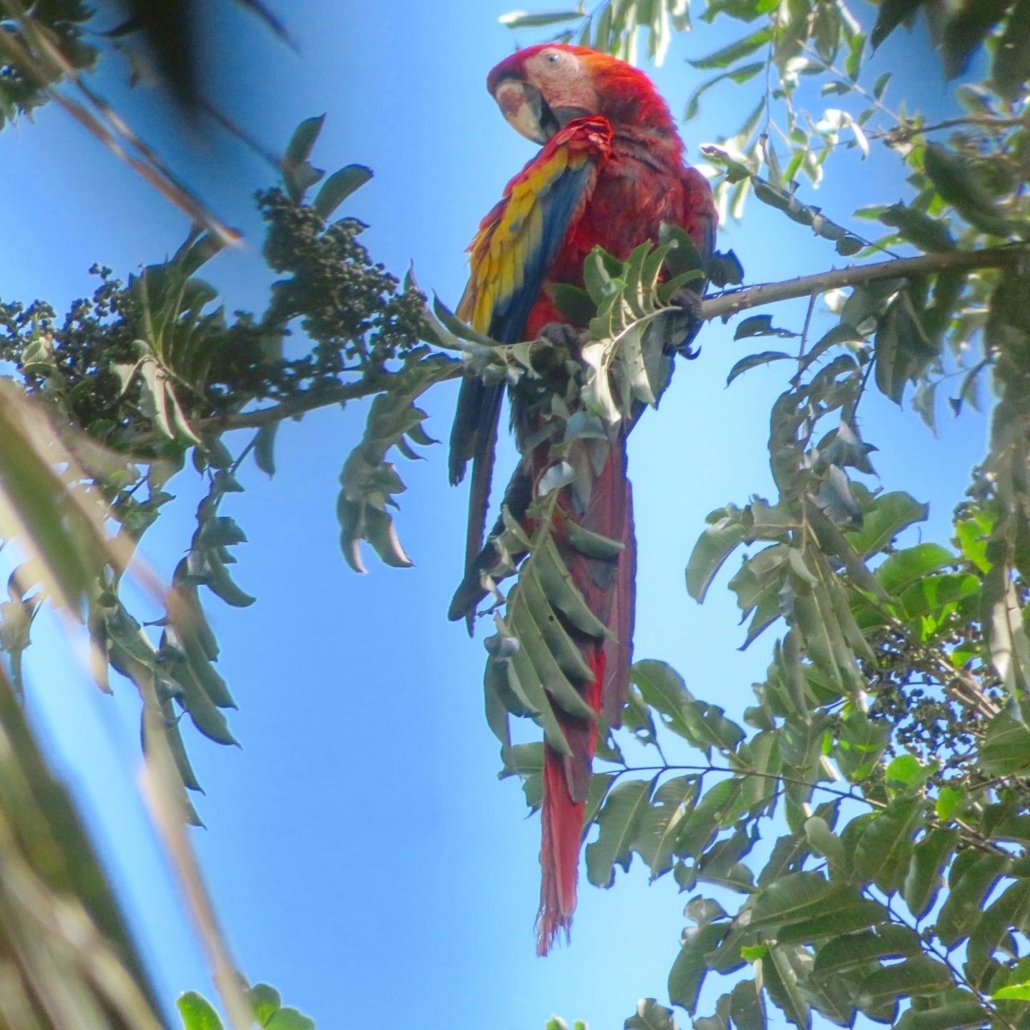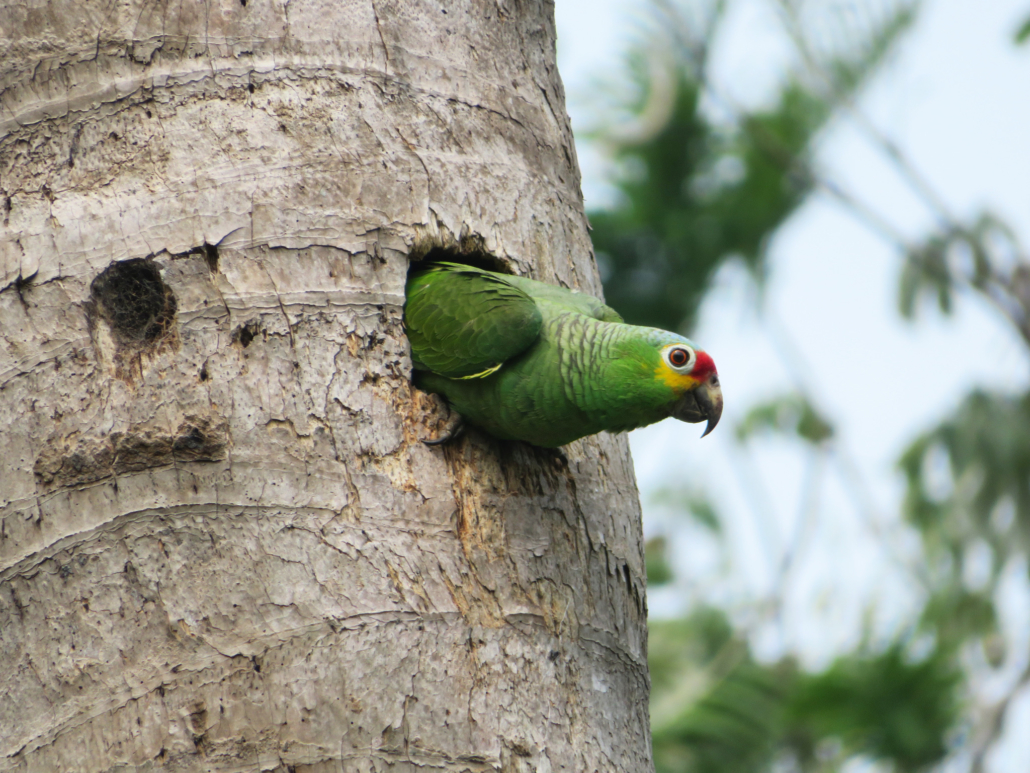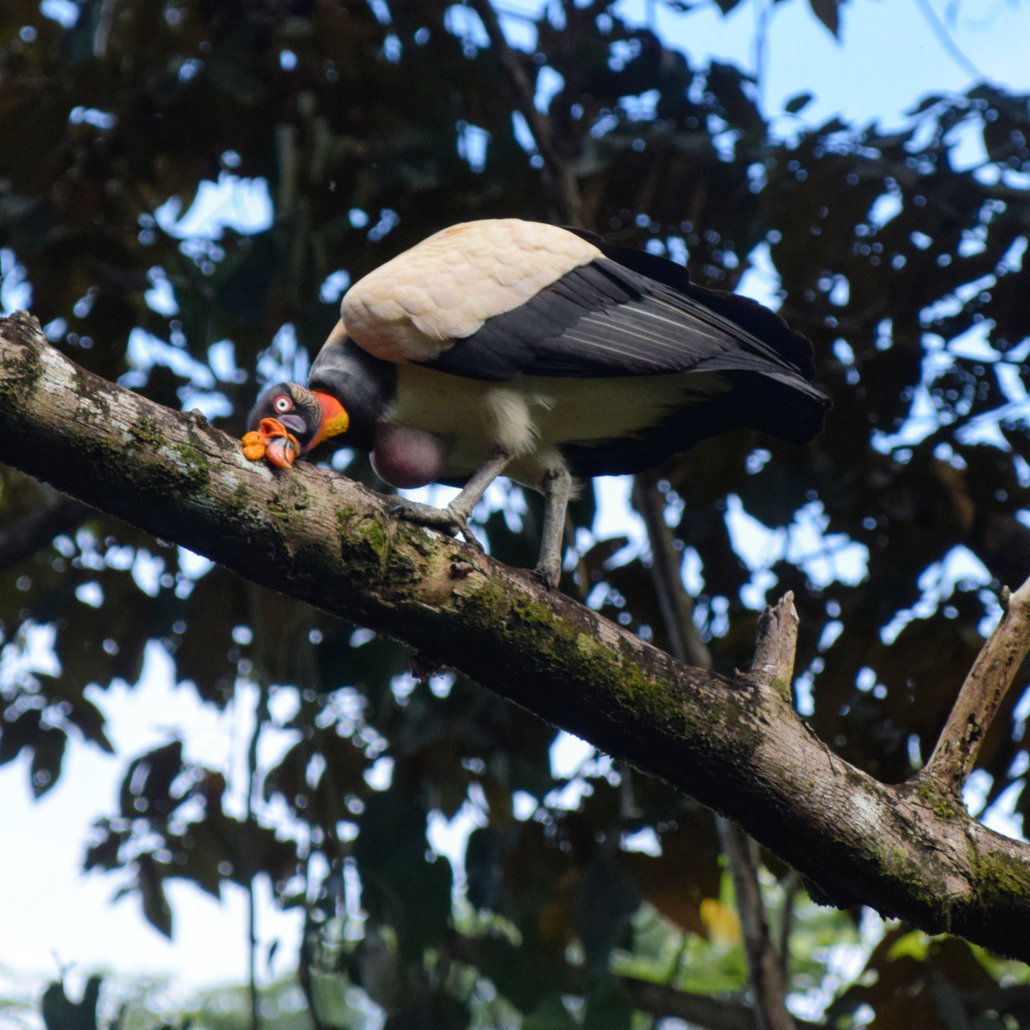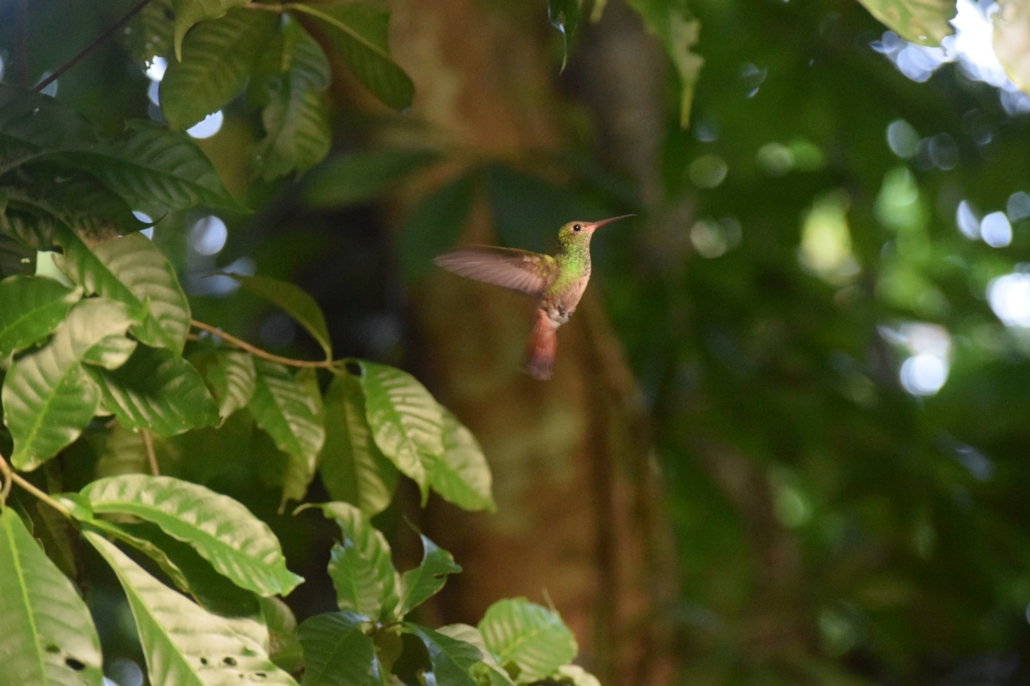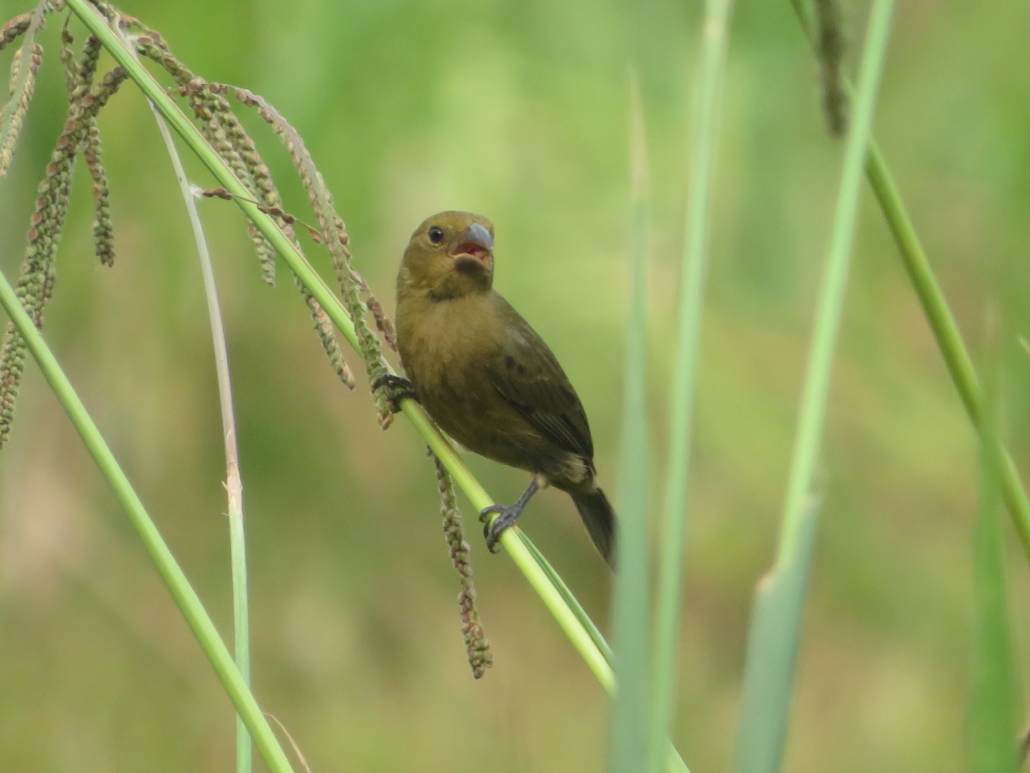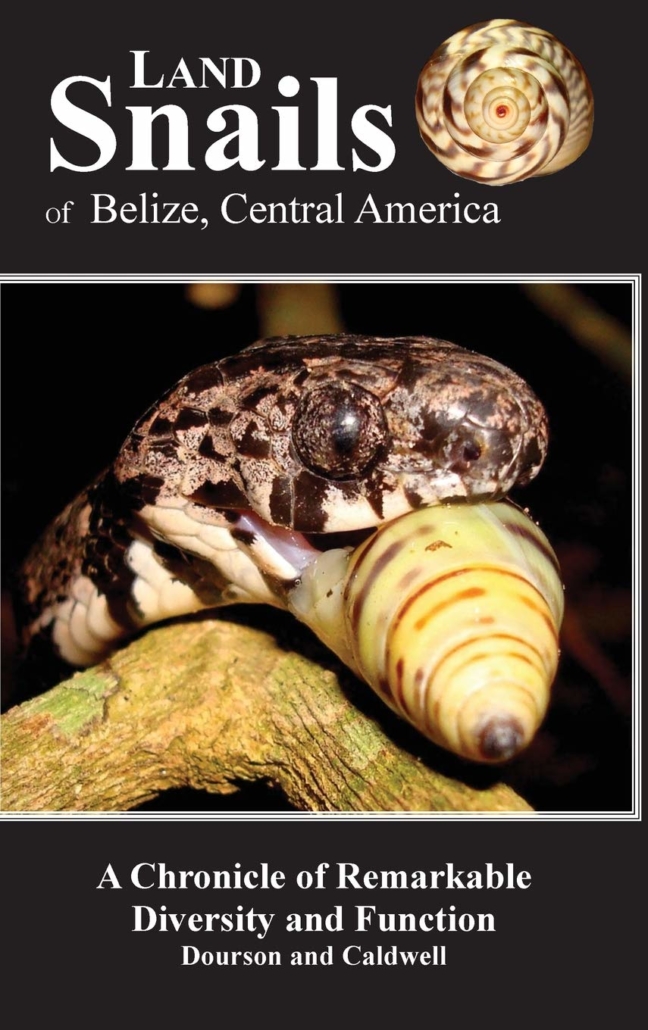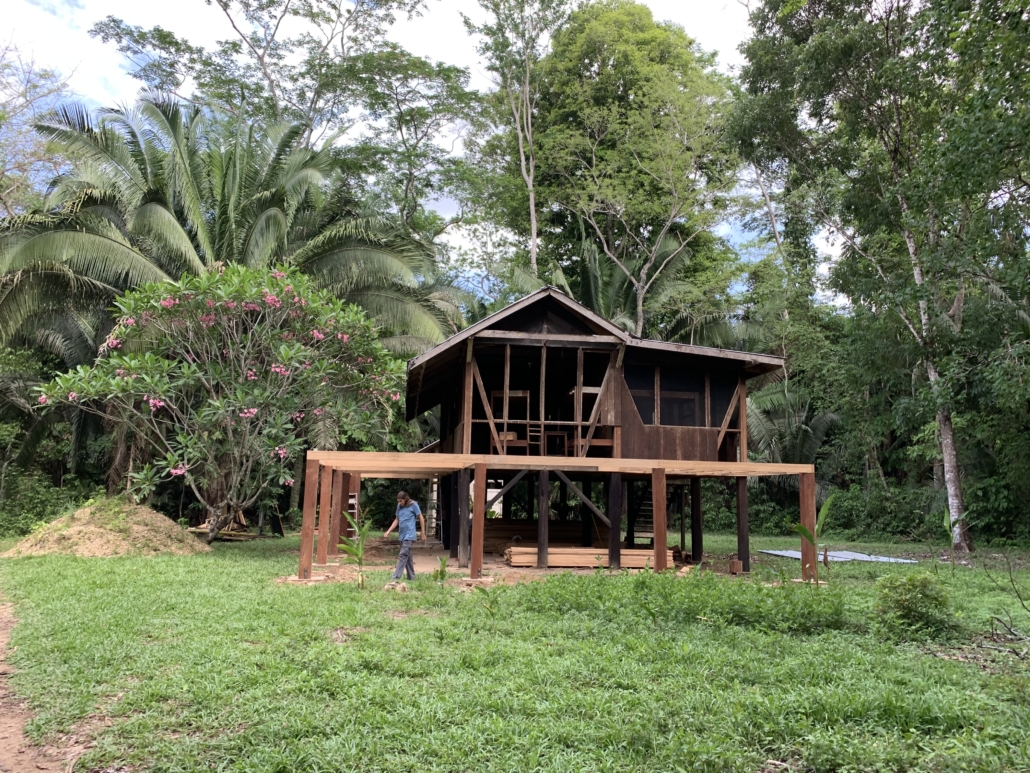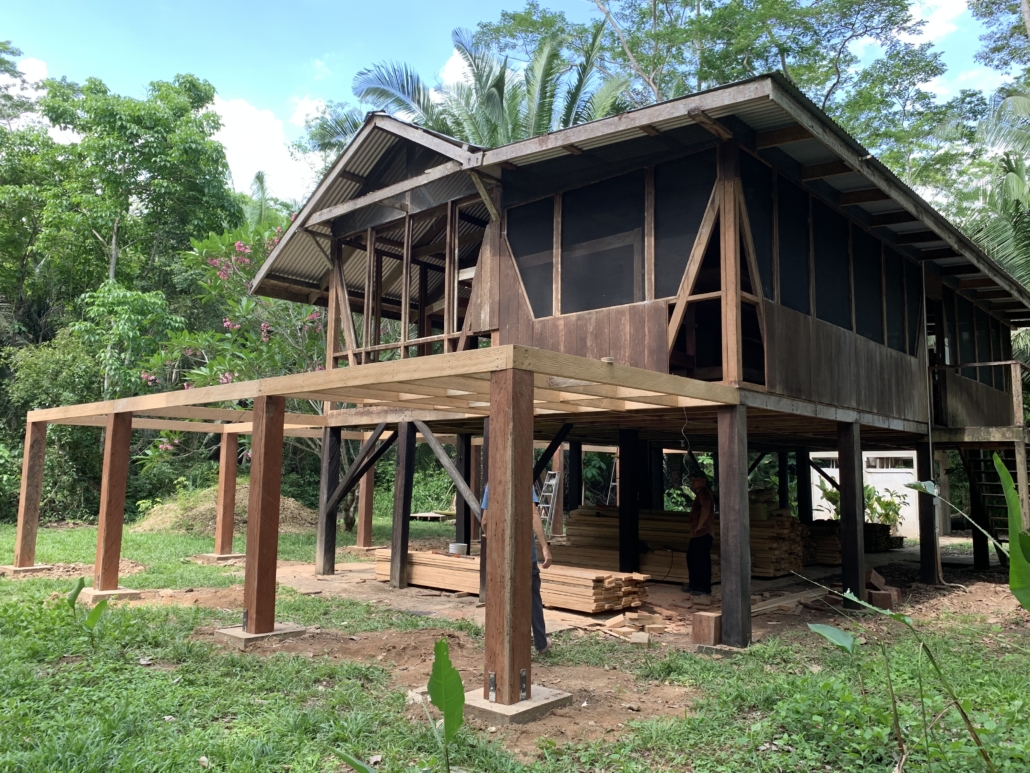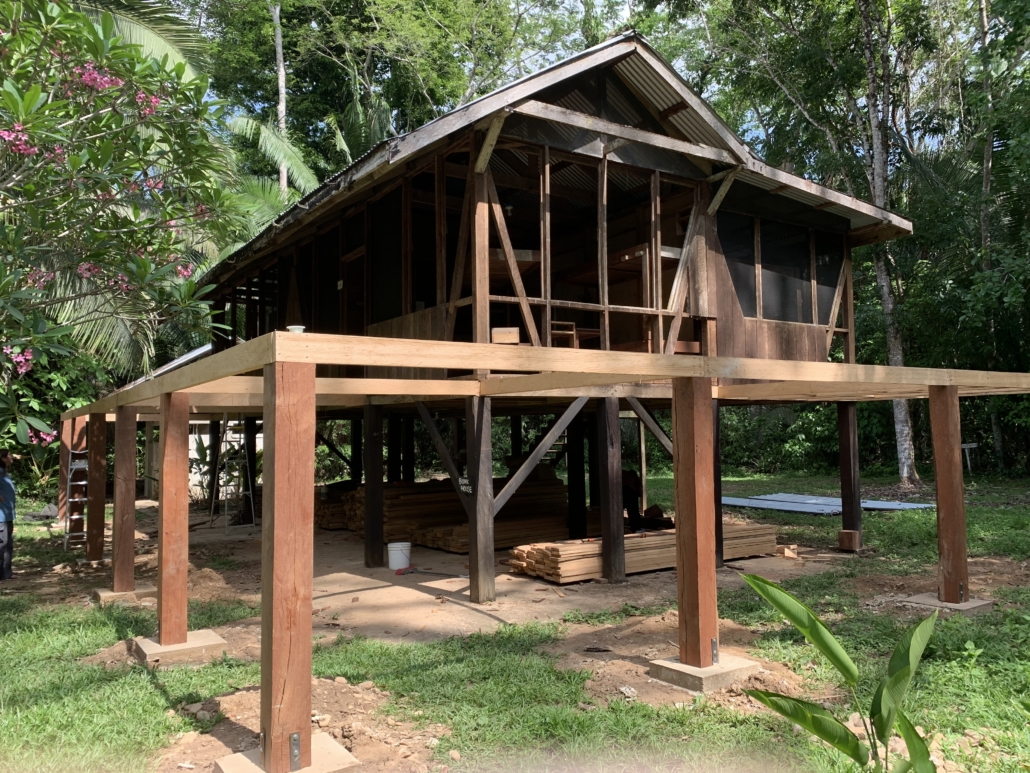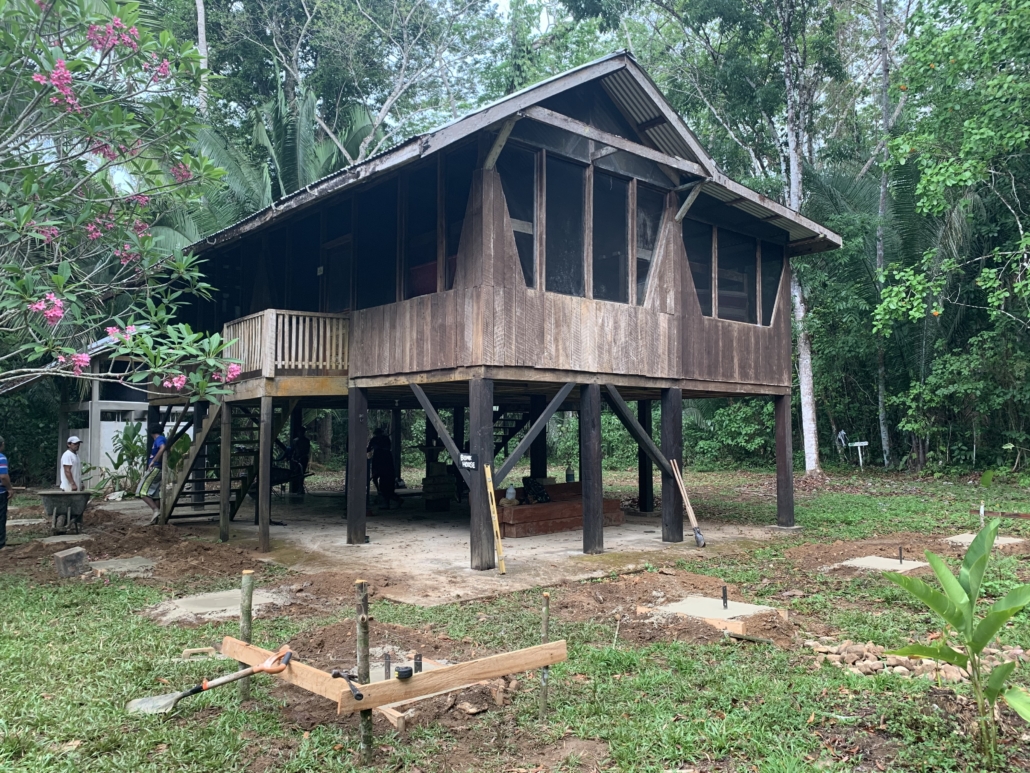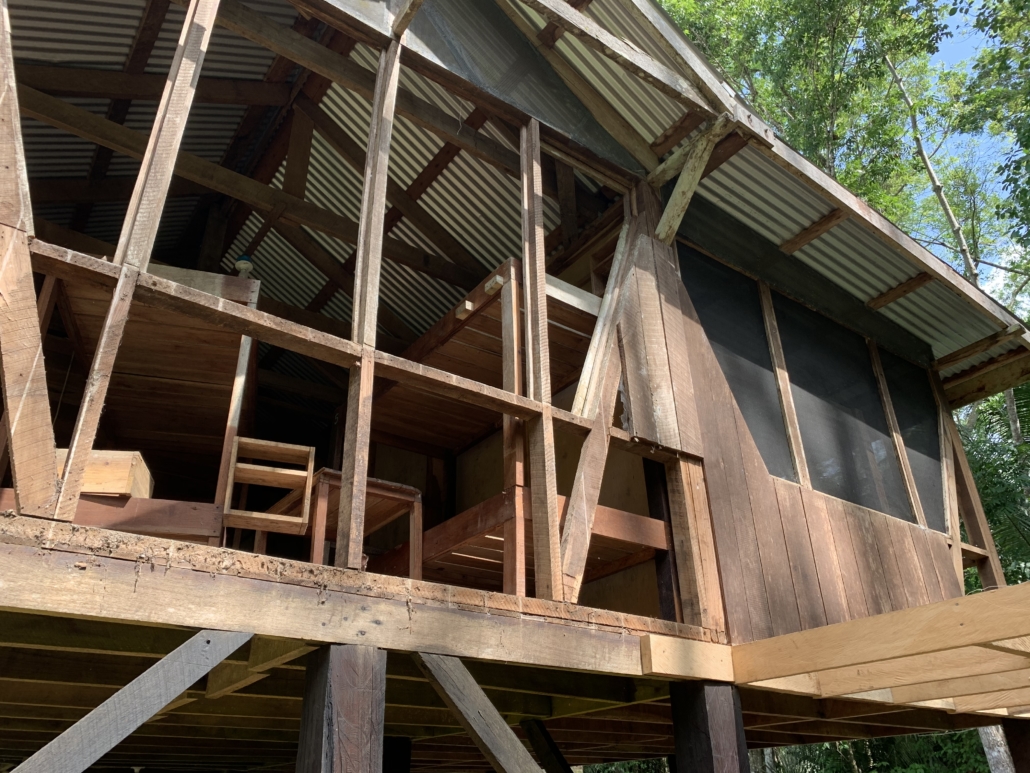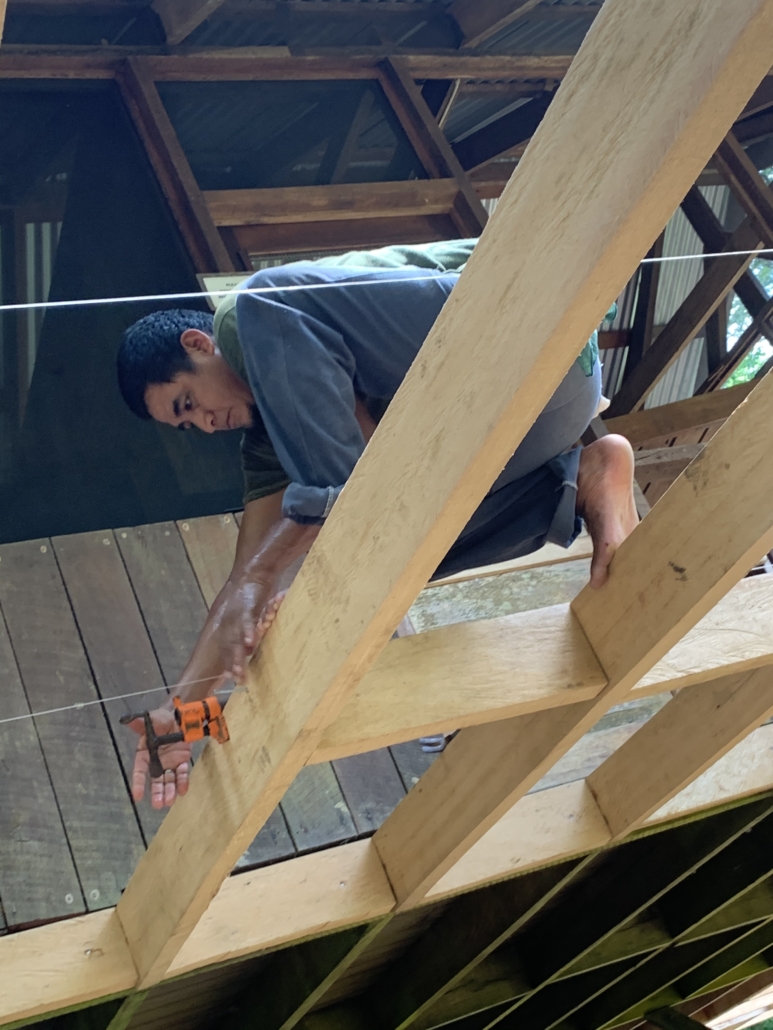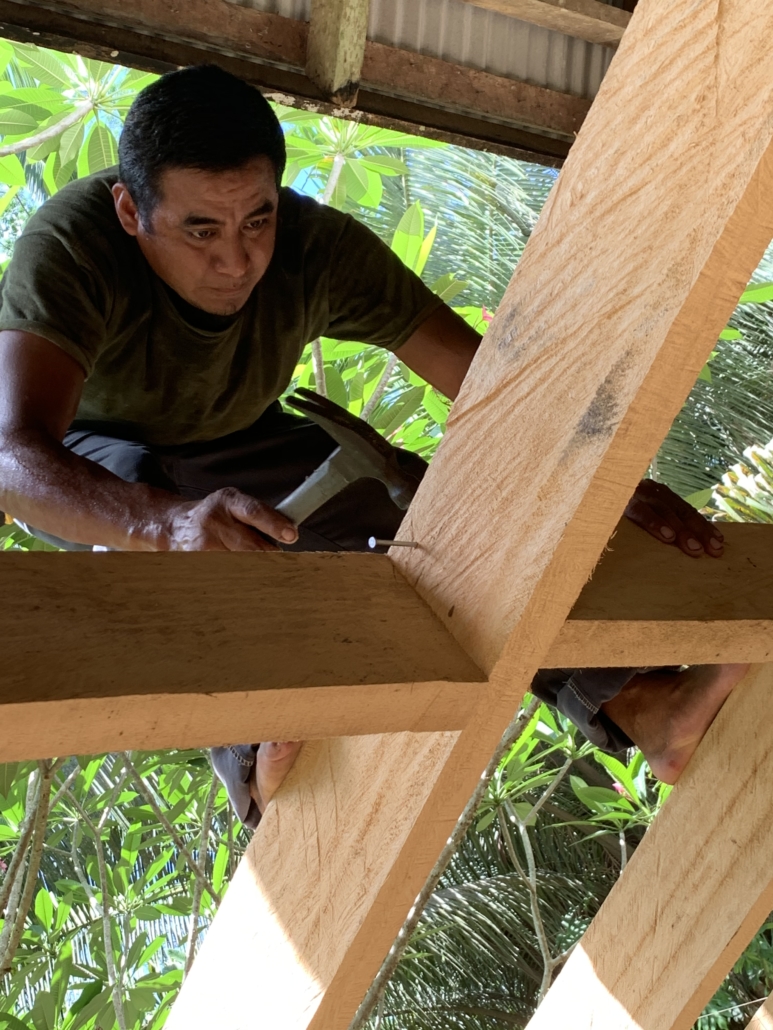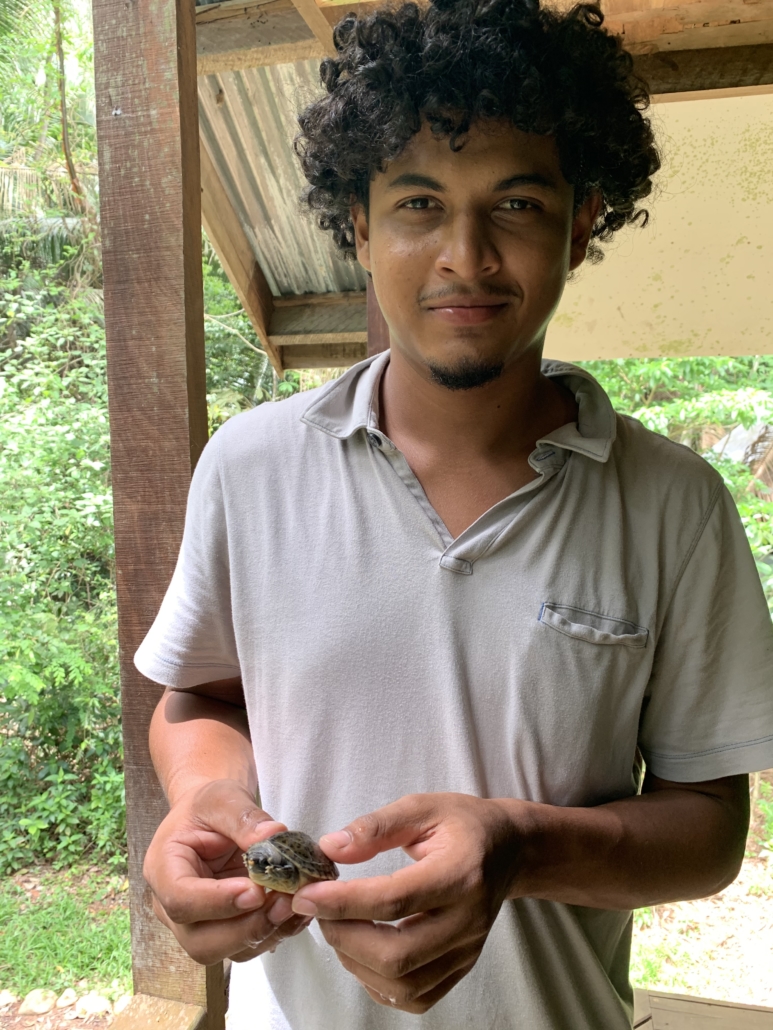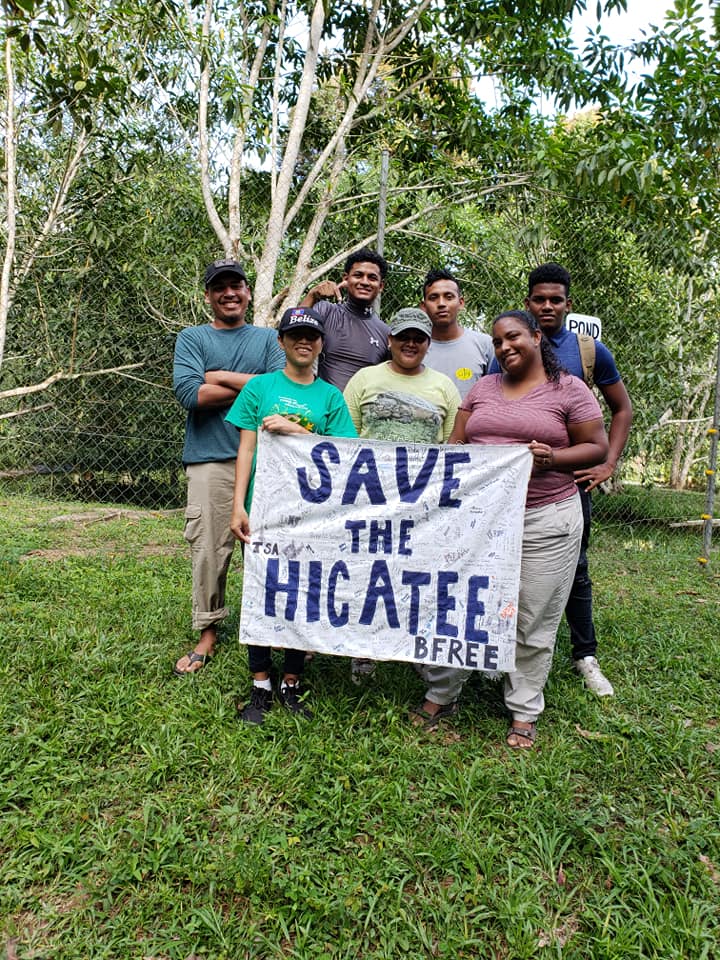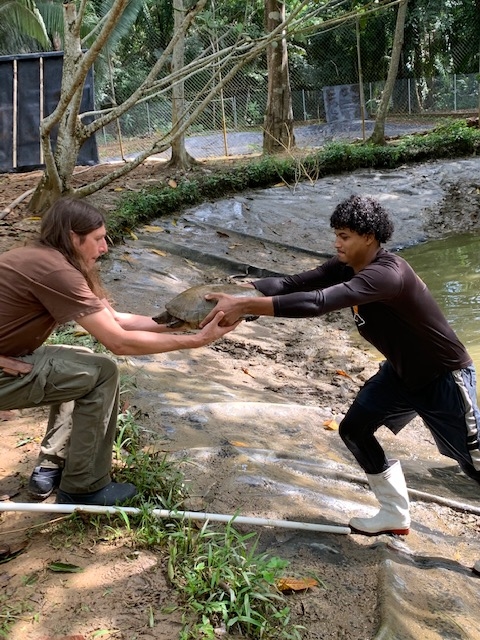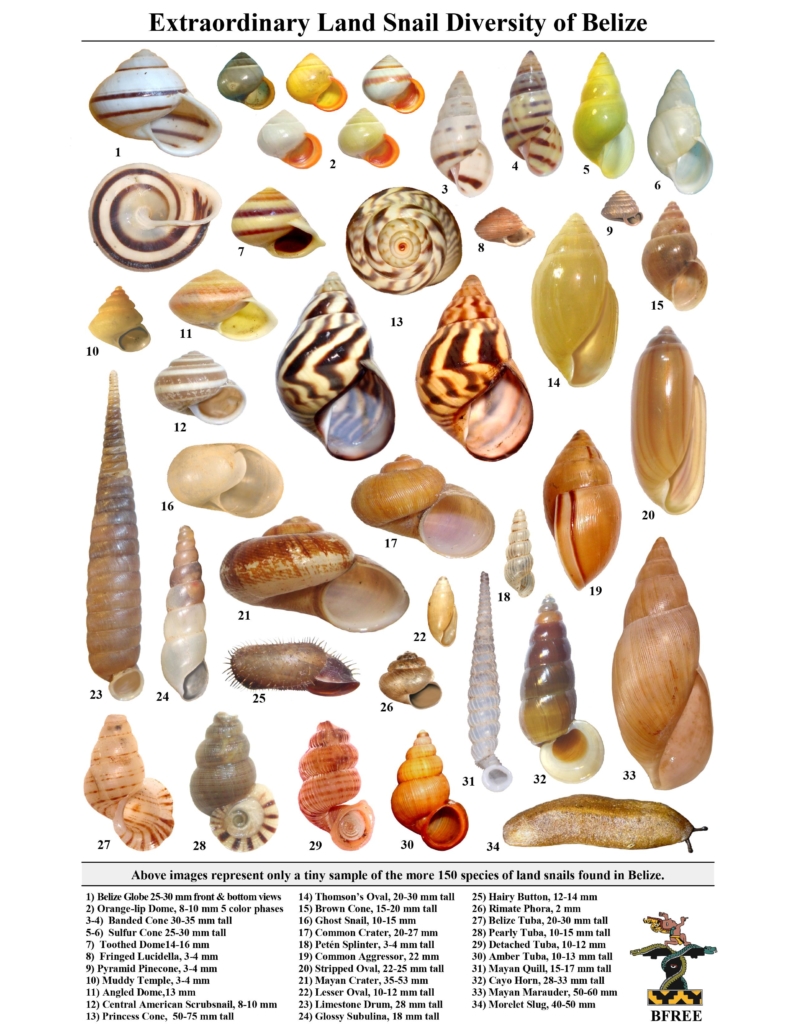From Seeds to Trees
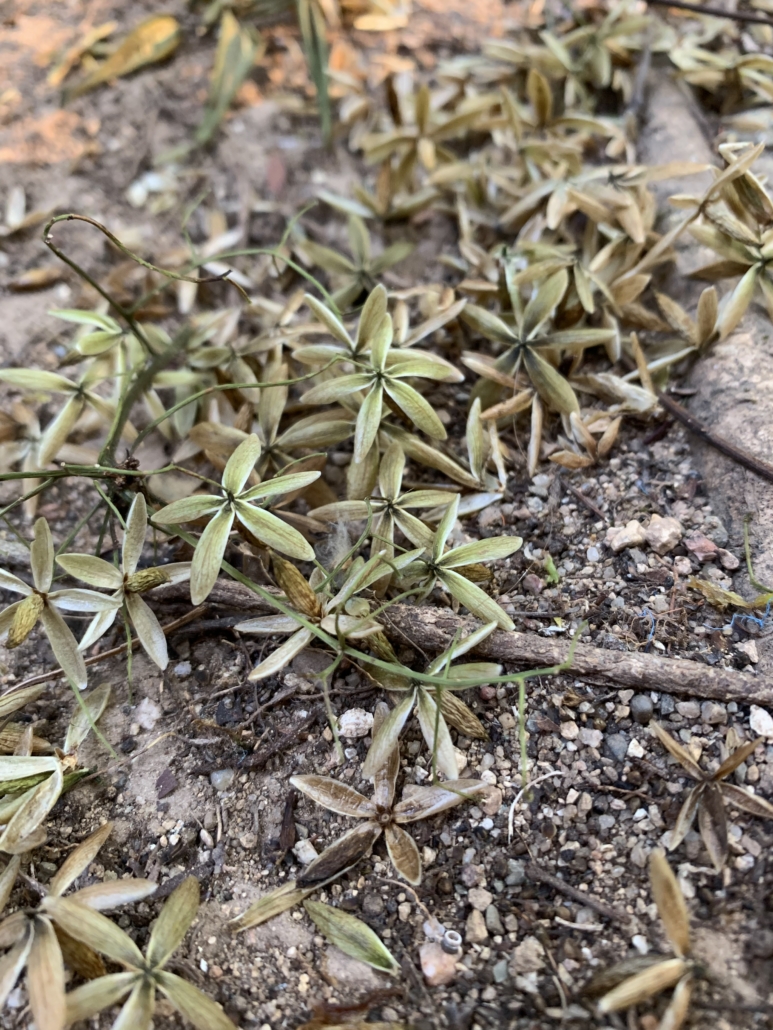
A couple of years ago, the Jobillo tree next to the house where I live at BFREE, began dropping flowers. The dry season was in full force, so it must have been around May when I noticed the first bunch of delicate, perfect, pale, white blooms. I collected a few out of curiosity and asked Jacob what they were. I learned that the flowers, which detached from the tree in clumps before falling/ floating to the ground, were the tree’s method of seed dispersal and that this only happened every few years. I was fascinated by the perfect central seed that the flowers protected and transported to the earth. Jobillo (sometimes called Tigerwood) is an unusual species of tropical hardwood that has a dark orangish-red cast to the heartwood and is streaked with dark brown to black “tiger stripes.” Jobillo is native to Central and South America and is in the genus of flowering plants in the cashew family called Astronium.
That year, Jobillo flowers soon covered the ground near the house and I began collecting them in my trusty yellow bucket. I spent hours over many days separating seeds from flowers. In the end, I had thousands of seeds and was enthusiastic to plant and share these rare treasures. I placed several hundred seeds in bags in the BFREE plant nursery and still I had thousands remaining, so I divided them into several bags and gave them to our closest neighbors at the Gomez Sawmill and to anyone else who expressed interest.
My enthusiasm was perhaps appreciated but not necessarily shared. Not because Jobillo isn’t beautiful and valuable – it is both of those things – but because it has several innate challenges. Its irregular grain and alternating layers of hard and soft wood make Jobillo difficult to work with. Also, it is exceptionally slow growing. Trees on the property that are known to be nearly 20 years old are tall but only 10-12 inches in diameter. Still, a few dozen of my trees were planted within the cacao agroforestry project in order to add some variety and some long-term shade. The rest were left to grow in the nursery and cared for along with the other nursery plants. To our surprise, last month when Jacob received a phone call: a Belizean woman from Cayo heard we have a nursery and might have some unusual hardwoods for sale. She was particularly interested in Jobillo.
After several phone calls, arrangements were made for her to purchase 130 of our Jobillo saplings. I was thrilled! The truck was loaded with plants plus a few extra for good measure and we drove out to meet Lavinia and her daughter.
Lavinia owns a nursery and was gathering the trees for a client doing a reforestation project in northern Belize near the Mexican border. She surveyed the condition of the trees and we asked if they met with her approval, she slowly nodded. “The leaves are so pretty I could put them in a salad.” She and her daughter laughed and she added, “We are plant-based, so everything green looks like our next meal.” During our brief interaction, Lavinia told us that she wants her nursery to encourage people to plant more trees and food plants. During the pandemic, she has been surprised that more Belizeans didn’t take the opportunity to start producing their own food in home gardens. She has also noticed that there are many areas throughout Belize that were damaged by fire but have never been replanted. Her motto for her nursery is “Planting up Belize.”
Lavinia’s interest in the plants and trees produced at BFREE and her concern about the loss of green areas throughout the country, reminded me of the critical and continued role BFREE’s forests can play in producing seeds and saplings for the future, not just of this property, or of the Toledo District, but for Belize in its entirety.
Image One: Thousands of the seeds were collected from the one flowering Jobillo tree dropping flowers near Heather’s house at BFREE. Image Two: Two years after planting the collected seeds, saplings were ready for delivery to Lavinia’s nursery and loaded into the back of the truck. Image Three: Heather Barrett and Jacob Marlin pose with the saplings before delivering them to their new home.

